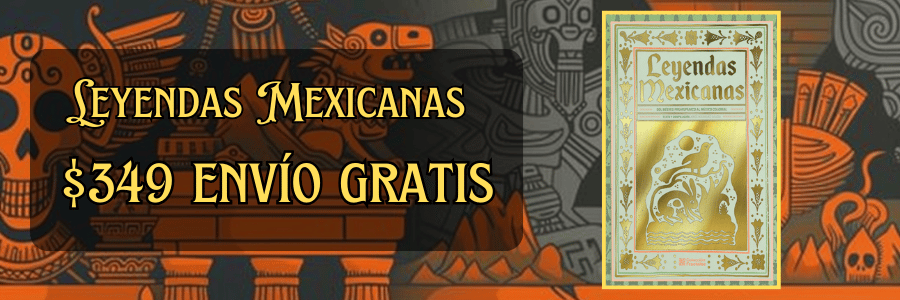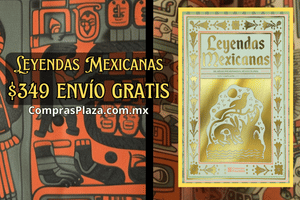The Role of Mestizos and Indigenous People in Mexico’s Independence
The struggle for Mexican independence from Spanish colonial rule was marked by a diversity of social classes and ethnic groups, with mestizos and indigenous people playing pivotal roles throughout the independence movement. The narrative around Mexican independence is often dominated by figures such as Miguel Hidalgo, José María Morelos, and Agustín de Iturbide, yet the collective agency of mestizos and indigenous populations significantly influenced the course of this monumental historical event. This article will explore the multifaceted contributions of these groups, examining their social conditions, motivations, and impacts on the revolution that led to the creation of a sovereign Mexico.
In the 19th century, Mexico was a highly stratified society where a rigid caste system dictated social mobility and access to resources. At the top of the hierarchy sat the Spanish-born peninsulares, followed by criollos—people of Spanish descent born in the Americas. Below them were mestizos, who were of mixed Indigenous and Spanish ancestry. At the bottom were the Indigenous people, who were often subjected to systemic discrimination, forced labor, and economic exploitation. This social stratification contributed to feelings of resentment and discontent among mestizos and Indigenous populations, who were denied equal rights and representation in the colonial system.
The seeds of independence were sown in the late 18th century through factors such as the Enlightenment, increasing economic hardship, and growing discontent with Spanish rule. Intellectual movements in Europe fostered ideals of democracy, individual rights, and self-determination. The influence of these ideas reached Mexico, invigorating a growing middle class of criollos while inspiring mestizos and Indigenous people alike to aspire for liberty from colonial authority. Inspired by the American and French revolutions, many sought empowerment and an end to systemic oppression.
The initial catalyst for the independence movement came with the call to arms issued by Miguel Hidalgo y Costilla in 1810. Hidalgo, a criollo priest, leveraged his position to rally support against the Spanish crown. However, it was the presence of mestizos and Indigenous people at the forefront of this uprising that marked a turning point in the movement. Hidalgo's Grito de Dolores, or "Cry of Dolores," was not only a demand for independence but also a call for social reforms that would benefit the disenfranchised populations of Mexico.
The involvement of mestizos and Indigenous peoples expanded tremendously during the early years of the independence movement. Hidalgo's peasant army, consisting predominantly of these groups, surged towards the capital. This army demonstrated a mix of religious fervor and social aspirations, composed predominantly of those who had long borne the weight of colonial oppression. For many, the fight for independence was not just about breaking free from Spain; it was also about reclaiming their rights and eliminating the social and economic inequalities pervasive in colonial society.
One of the most remarkable figures during this early stage was José María Morelos, a mestizo priest who took up the revolutionary banner after Hidalgo's execution in 1811. Morelos articulated a vision for a more equitable society, emphasizing land reform, education, and the rights of Indigenous people. Under Morelos, the movement saw the drafting of the Sentimientos de la Nación, wherein he called for a system free from oppression, promoting a land reform agenda to benefit the peasant class and Indigenous peoples. Morelos’ leadership exemplified the centrality of mestizo voices in advancing socio-political ideals during the independence struggle.
As the war progressed, the participation of mestizos and Indigenous people became pivotal in battles across different regions. The charismatic leadership of insurgents like Morelos, Vicente Guerrero, and Ignacio Allende managed to consolidate a diverse coalition of rebels. These leaders often hailed from marginal backgrounds and reflected the aspirations of the underprivileged in their quest for equality. As the insurgents fought battles to thwart royalist forces, their ranks were filled with a variety of ethnic identities, whose unity symbolized the collective desire for liberation and empowerment.
Resistance against the colonial regime was met with severe retaliatory violence, leading to brutal confrontations between royalist troops and insurgent forces. Many Indigenous communities, who feared losing their lands and autonomy, inserted themselves into the independence struggle as a means of retaining their cultural identity and resisting further incursions by colonial authorities. Amid the imposition of taxes and conscription, these communities demonstrated resilience and solidarity, contributing to the depth of the independence movement. Particularly in rural, indigenous-rich areas, the struggle connected closely with local grievances against both colonial rule and land dispossession.
The evolution of the independence movement displayed regional differences, underlined by distinct social and ethnic compositions. While the central highlands witnessed intense revolutionary fervor, areas such as Oaxaca produced localized uprisings driven by Indigenous aspirations for autonomy. Leaders like Vicente Guerrero, of Afro-Indigenous heritage, articulated a vision that transcended ethnic divides and promoted shared objectives among oppressed classes. His role as a military commander and representative of marginalized voices supplemented the independence narrative with diverse stories of resistance.
By the mid-1810s, internal divisions, external pressures, and strategic missteps began to unravel the mixed forces uniting the independence fighters. The royalist response combined ruthless military repression with efforts to co-opt insurgent leaders. Some mestizos, divided by conflicting loyalties and promises from the colonial government, began to turn against their compatriots. However, leaders like Guerrero and Morelos attempted to bridge these divides and reignite collective ambitions toward independence. They sought to keep the broader objectives alive amidst a turbulent landscape of competing aspirations.
The culmination of the independence conflict took shape with the signing of the Plan of Iguala in 1821, orchestrated by Agustín de Iturbide. Significantly, this plan recognized the importance of inclusivity, advocating for the equality of all ethnic groups within Mexico and promising an end to the caste system that had long divided society. While Iturbide was a criollo, his alliance with Guerrero, a prominent mestizo leader, shed light on the complexities of social hierarchies during the revolutionary period. The Treaty of Córdoba later confirmed Mexico's independence, but the participation of mestizos and Indigenous peoples remained pivotal in shaping the political discourse following the war.
Post-independence, the promises of equity and social reform made during the revolutionary struggle proved challenging to realize. The nascent Mexican nation found itself grappling with the deep-seated inequalities entrenched within colonial structures. As power dynamics shifted, many Indigenous and mestizo populations found themselves marginalized once again, as the newly established elite sought to consolidate power amid the chaos of nation-building. This cyclical marginalization would reveal itself through subsequent land dispossession, systemic inequalities, and unfulfilled promises resting at the heart of the nation’s founding ethos.
Despite the disappointing realities that followed independence, the legacy of mestizos and Indigenous peoples persists in the national consciousness of Mexico. Their roles in the independence movement set in motion broad discussions about social justice, representation, and the rights of marginalized communities. The independence struggle left an indelible mark in historical memory, with figures such as Hidalgo and Guerrero celebrated as national heroes who transcended ethnic boundaries to fight for the collective good.
In contemporary Mexico, the spirit of the independence movement has sparked ongoing dialogues regarding identity and the rights of Indigenous communities. The consciousness surrounding mestizo identities—as interwoven narratives of cultural blending—has led to rejuvenated calls for recognition and redress. Today, celebrations of the Grito de Dolores emphasize the contributions of various social classes in seeking justice and equality, re-framing the quest for independence as a shared legacy that continues to inspire activism.
The contributions of mestizos and Indigenous people during Mexico’s independence represent a crucial chapter in the nation’s history, revealing the complexities of class structures, ethnic identities, and collective aspirations. Their interwoven narratives shed light on the ongoing struggles for dignity and autonomy within the broader context of national identity. By acknowledging the multifaceted roles played by these groups, a more inclusive historical narrative emerges, strengthening the resolve toward equity, justice, and the reclamation of agency that echoes throughout Mexico’s history and resonates into the future.
Explore More:
| How the Mexican Revolution Changed the Role of the Catholic Church |
| Education and Schools in Colonial Mexico |
| Women’s Rights in Mexico: Progress and Struggles After the Revolution |
| How the French Invasion of Mexico Impacted the Mexican Monarchy |
| The Artistic Legacy of Mexico’s Colonial Period: From Paintings to Sculpture |
| The Role of Oil in the Development of Alternative Fuels |
| How Mexican Artists Are Reimagining Their Cultural Roots |
| The Artistic Expression of Mexico’s Indigenous Communities |
| The Role of the Chichimeca in the Silver Mining Boom of Zacatecas |
| The Diplomacy of the French Intervention: Letters and Treaties |



